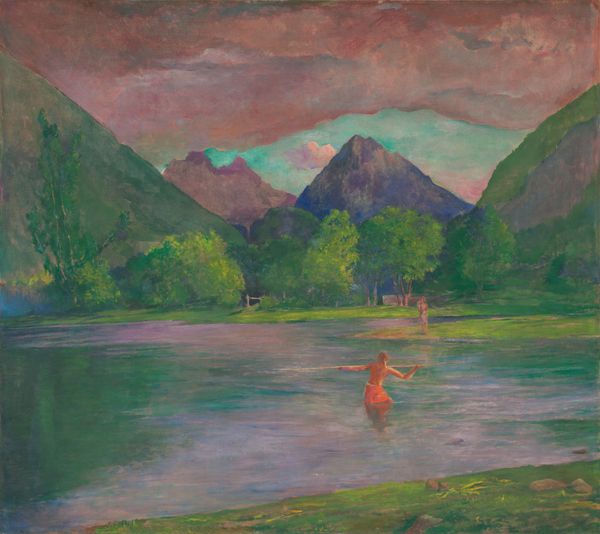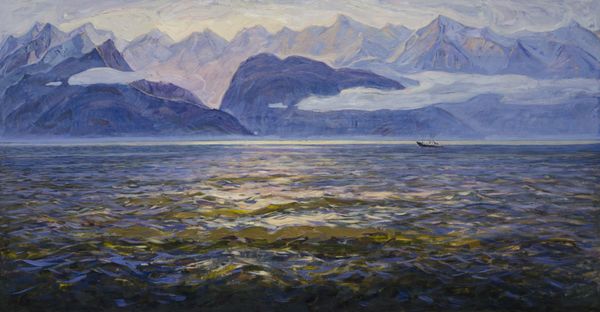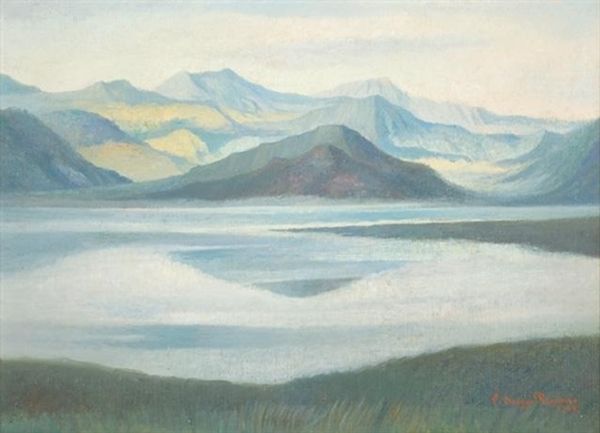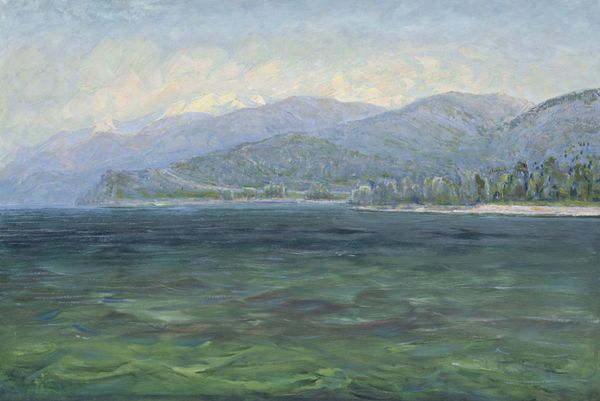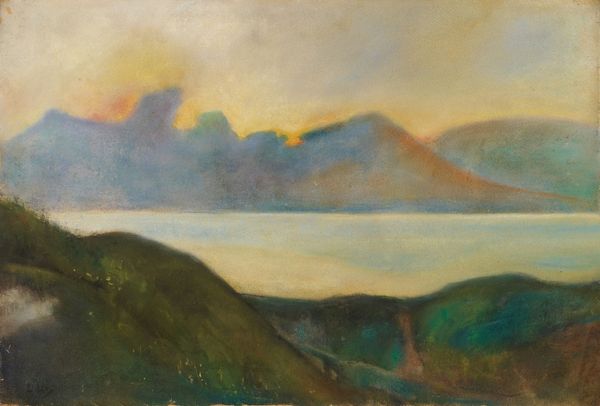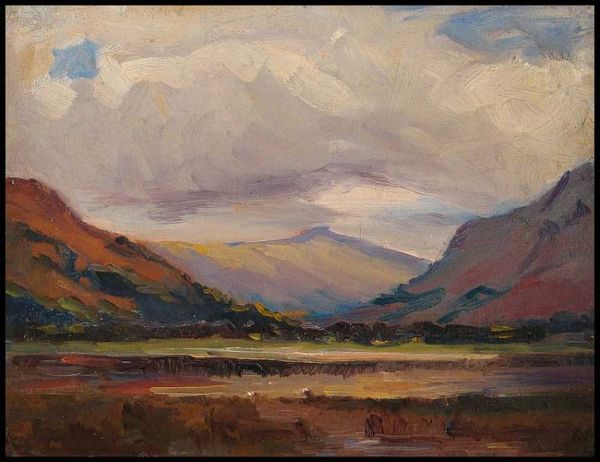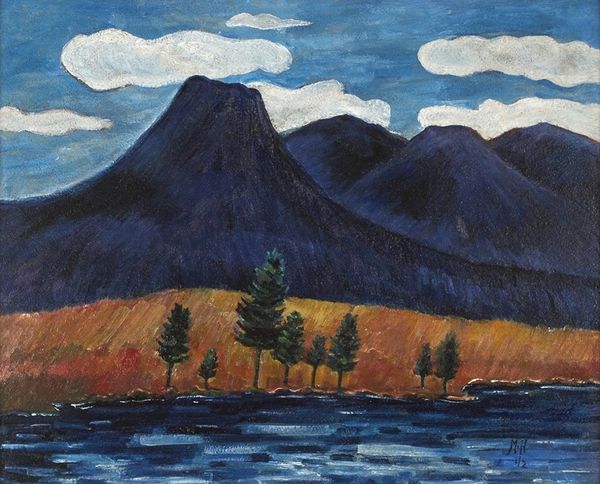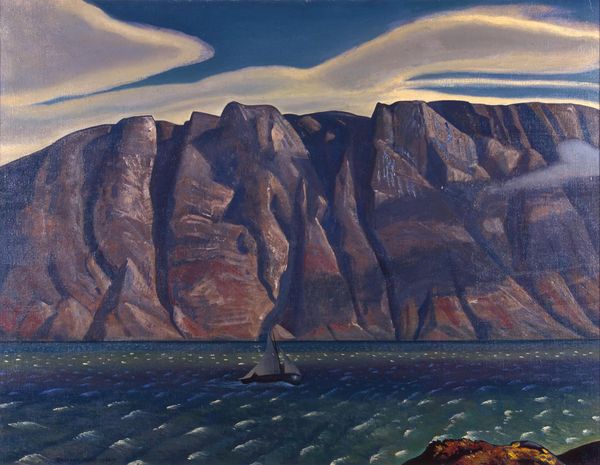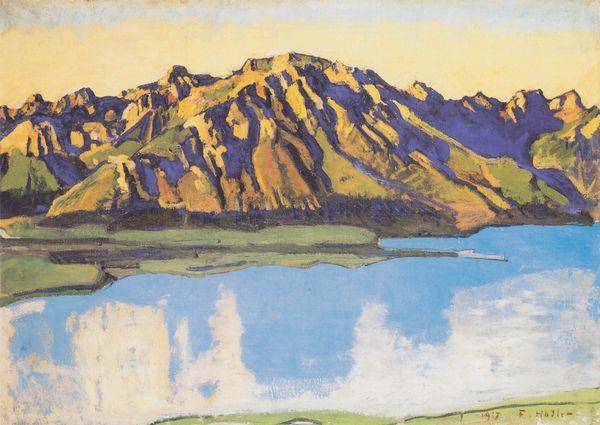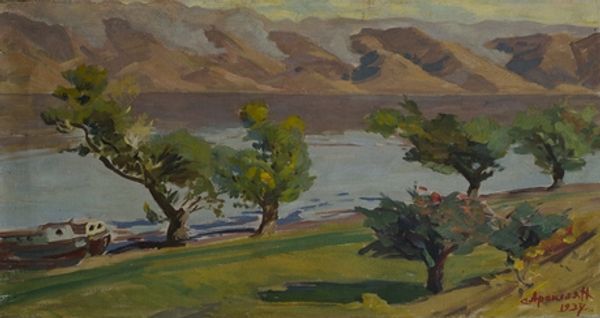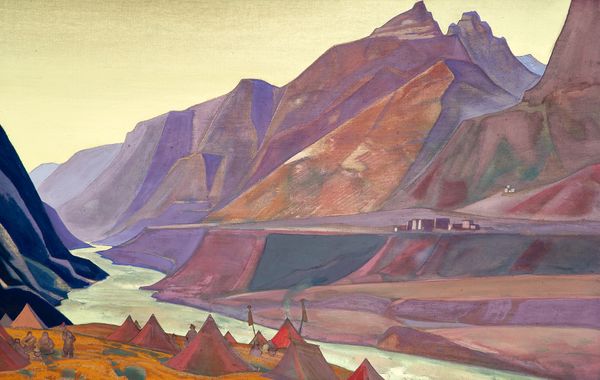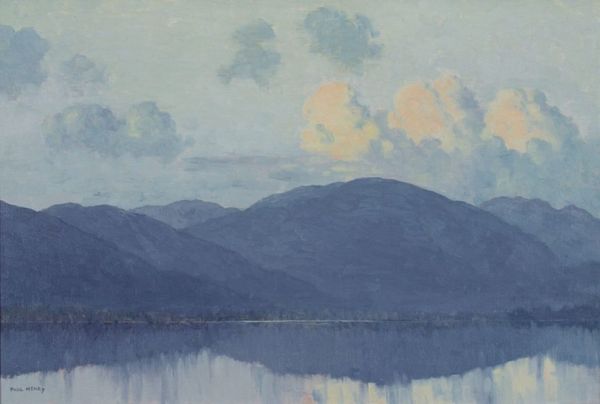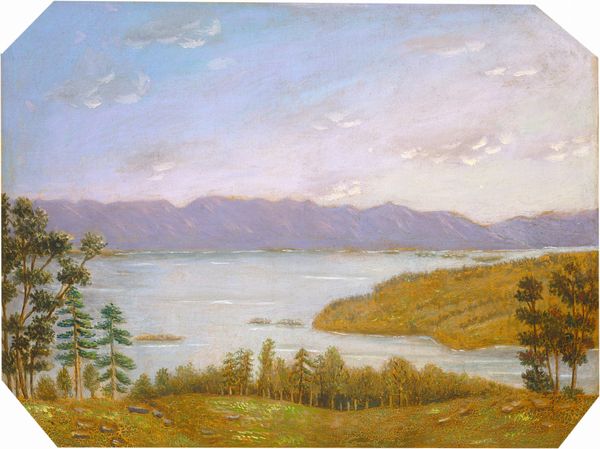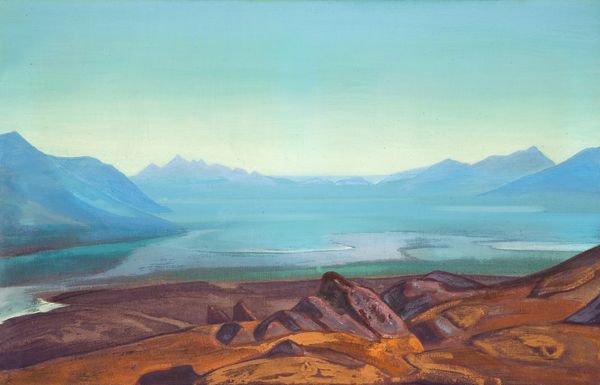
Dimensions: support: 857 x 1137 mm frame: 1159 x 1441 x 108 mm
Copyright: CC-BY-NC-ND 4.0 DEED, Photo: Tate
Curator: James Dickson Innes painted this scene, titled "Arenig, North Wales". Innes, born in 1887, died tragically young in 1914. Editor: It has an almost dreamlike quality, wouldn't you say? The light on those peaks is astonishing, like they're blushing. Curator: The painting reflects the British fascination with landscape in the early 20th century, linked with ideas of national identity and the picturesque. Editor: It's more than just picturesque, it really evokes a sense of melancholic longing, especially given the artist's premature death. That lone tree seems to echo that feeling. Curator: Innes's style blends elements of Impressionism and early Modernism. It's important to remember the social context of landscape painting at the time. Editor: I see it more as a deeply personal reflection on the transient beauty of the natural world. It’s a quiet masterpiece that speaks volumes, wouldn't you agree?
Comments
tate 6 months ago
⋮
http://www.tate.org.uk/art/artworks/innes-arenig-north-wales-n04385
Join the conversation
Join millions of artists and users on Artera today and experience the ultimate creative platform.
tate 6 months ago
⋮
Innes and Augustus John painted together at Nant-Ddu in autumn 1911 and summer 1912. John wrote that Innes 'was never happier than when painting in this district'. Arenig is the name of the mountain to the north-west of Lake Bala, the shore of which can be seen in the foreground, viewed from Nant-Ddu. This is the largest and latest of all Innes's known paintings of Arenig, and it may have been completed in London rather than on site in North Wales. It shows the influence of pictures by Matisse and Le Douanier Rousseau, which Innes may have seen in Paris. Gallery label, August 2004
